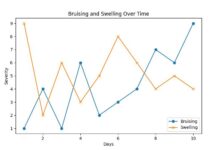Learn about Inflammation Management
By reading this article, you will learn:
– Hot and cold compress benefits
– Hot compress relaxes muscles, cold reduces swelling
– Both help manage pain and inflammation
– Specific conditions for each compress
– Hot compress for muscle pain, cold for swelling
– Contrast therapy for some conditions
Inflammation is a natural response by the body's immune system to protect against injury, infection, or illness. When inflammation becomes chronic, it can lead to various health issues, including arthritis, heart disease, and cancer. Managing inflammation is crucial for overall well-being. One of the effective ways to alleviate inflammation and associated pain is through hot or cold compress therapy. This article aims to provide a comprehensive guide on using hot and cold compresses for pain relief, making informed decisions based on the specific condition or injury.
Understanding Inflammation
Explanation of Inflammation and Its Effects on the Body
Inflammation is the body's defense mechanism in response to harmful stimuli, leading to redness, swelling, heat, and pain in the affected area. It involves a complex interplay of immune cells, blood vessels, and signaling molecules. Chronic inflammation can contribute to the development of various diseases, emphasizing the importance of managing it effectively.
Causes and Triggers of Inflammation
Inflammation can be triggered by various factors, including pathogens, physical trauma, toxins, and autoimmune reactions. Lifestyle factors such as poor diet, stress, and lack of exercise can also contribute to chronic inflammation.
Common Conditions Associated with Inflammation
Inflammation is associated with a wide range of conditions, including arthritis, tendonitis, bursitis, and inflammatory bowel diseases like Crohn's disease and ulcerative colitis. Managing inflammation is crucial for alleviating the symptoms associated with these conditions.
Hot Compress for Inflammation
Mechanism of Action and How It Affects Inflammation
Hot compress therapy works by improving blood circulation to the affected area, promoting the delivery of oxygen and nutrients while removing waste products. This helps in reducing muscle tension, easing pain, and enhancing the healing process.
Benefits of Using Hot Compress for Pain Relief
Using a hot compress can provide relief from conditions such as muscle aches, menstrual cramps, and chronic joint pain. The increased blood flow facilitated by the hot compress can help in relaxing muscles and reducing stiffness, leading to natural pain relief.
Conditions and Injuries Suitable for Hot Compress
Hot compress therapy is particularly beneficial for conditions such as muscle spasms, arthritis, and muscle strains. It can also provide relief for chronic conditions like fibromyalgia and lower back pain.
| Hot Compress for Inflammation | Cold Compress for Inflammation |
|---|---|
| Mechanism of Action: Improves blood circulation, promotes delivery of oxygen and nutrients, reduces muscle tension, and enhances healing process. | Mechanism of Action: Constricts blood vessels, reduces blood flow, decreases inflammation and swelling, and provides a numbing effect. |
| Benefits: Provides relief for muscle aches, menstrual cramps, chronic joint pain, relaxes muscles, and reduces stiffness. | Benefits: Effective for reducing swelling, alleviating acute injuries, managing pain from conditions like gout and sprains, and providing immediate relief from acute pain. |
| Suitable for: Muscle spasms, arthritis, muscle strains, fibromyalgia, and lower back pain. | Suitable for: Bruises, strains, sprains, tendonitis, and plantar fasciitis. |
Cold Compress for Inflammation
Mechanism of Action and Its Impact on Inflammation
Cold compress therapy works by constricting blood vessels, reducing blood flow to the affected area, and decreasing inflammation and swelling. It also helps in numbing the area, providing a natural analgesic effect.
Benefits of Using Cold Compress for Pain Relief
Cold compresses are effective in reducing swelling, alleviating acute injuries, and managing pain associated with conditions like gout, sprains, and post-surgical discomfort. The numbing effect can also provide immediate relief from acute pain.
Conditions and Injuries Suitable for Cold Compress
Cold compress therapy is particularly suitable for acute injuries such as bruises, strains, and sprains. It can also be beneficial in managing inflammation associated with conditions like tendonitis and plantar fasciitis.
When to Use Hot or Cold Compress
Specific Scenarios and Conditions for Hot Compress Application
Hot compress therapy is suitable for chronic conditions, stiffness, and muscle tension. It is effective for promoting relaxation and easing discomfort in persistent pain conditions.
Specific Scenarios and Conditions for Cold Compress Application
Cold compress therapy is ideal for acute injuries, swelling, and post-operative pain. It is beneficial for managing sudden pain and reducing inflammation in the early stages of an injury.
Understanding the Difference in Application and the Science behind It
Understanding when to use hot or cold compress involves considering the nature of the injury or condition. While hot compresses are better for chronic pain, cold compresses are more effective for acute injuries and sudden flare-ups of inflammation.
How to Make and Use Hot or Cold Compress
Step-by-Step Guide for Making and Applying Hot Compress
To make a hot compress, soak a clean cloth in hot water, wring out the excess, and apply it to the affected area for 15-20 minutes. It's essential to test the temperature to avoid burns and ensure comfort.
Step-by-Step Guide for Making and Applying Cold Compress
A cold compress can be made by wrapping ice or a frozen gel pack in a towel and applying it to the affected area for 10-15 minutes. It's crucial to avoid direct contact with the skin to prevent frostbite.
Correct Techniques for Application to Maximize Benefits
Regardless of whether using hot or cold compress, it's essential to limit each session to 20 minutes and allow the skin to return to its normal temperature before reapplying. This helps in preventing adverse effects on the skin.
Potential Risks and Precautions
Risks Associated with Hot Compress and How to Mitigate Them
Prolonged exposure to excessive heat can lead to burns and skin damage. It's crucial to use a barrier such as a towel between the compress and the skin and avoid falling asleep while using hot compress therapy.
Risks Associated with Cold Compress and How to Mitigate Them
Extended application of cold compress can result in skin damage such as frostbite. It's important to limit the duration of cold compress therapy and allow the skin to return to normal temperature between applications.
Precautions to Ensure Safe and Effective Use of Hot and Cold Compress
It's essential to follow the recommended time limits for both hot and cold compress therapy and monitor the skin for any signs of adverse reactions. If there are concerns, it's advisable to seek medical advice.
Combining Hot and Cold Therapy
Explanation of Contrast Therapy and Its Role in Inflammation Management
Contrast therapy involves alternating between hot and cold therapy to harness the benefits of both approaches. This can help in improving circulation, reducing inflammation, and promoting faster recovery.
Benefits and Considerations of Alternating Between Hot and Cold Therapy
The contrast between hot and cold temperatures can aid in reducing muscle spasms, enhancing flexibility, and accelerating the healing process. It's important to consider individual tolerance and seek professional advice for specific conditions.
Conditions and Injuries Suitable for Contrast Therapy
Contrast therapy can be beneficial for conditions like tendonitis, repetitive strain injuries, and muscle soreness. It can also aid in post-exercise recovery for athletes and individuals engaged in physical activities.
Personal Experience: Finding Relief with Cold Compress for Sports Injury
Growing up as an active teenager, I was passionate about playing basketball. However, during a game, I suffered a sprained ankle while attempting to make a jump shot. The pain and swelling were immediate, and I was concerned about the recovery process. After consulting with a sports therapist, I was advised to use a cold compress to alleviate the inflammation and discomfort.
The Impact of Cold Compress
I applied a cold compress to my ankle for 20 minutes every few hours, especially during the first 48 hours after the injury. This helped to reduce the swelling and numbed the area, providing much-needed relief.
Benefits of Cold Compress
The cold compress not only helped in reducing the pain but also minimized the extent of the swelling, allowing me to regain mobility and begin the rehabilitation process sooner.
Suitable Conditions for Cold Compress
My experience highlighted the effectiveness of cold compress therapy for acute sports injuries, as it helped to manage the immediate inflammation and discomfort, contributing to a smoother recovery process.
This personal encounter with the benefits of cold compress therapy underscores its significance in managing inflammation, especially in the context of sports-related injuries.
Other Natural Remedies for Inflammation
Brief Overview of Herbal Remedies and Their Role in Managing Inflammation
Herbal remedies such as turmeric, ginger, and boswellia have anti-inflammatory properties and can complement hot and cold compress therapy in managing inflammation naturally.
Brief Overview of Essential Oils and Their Impact on Inflammation
Essential oils like lavender, eucalyptus, and peppermint possess anti-inflammatory and analgesic properties, making them useful for topical application in conjunction with compress therapy.
Impact of Dietary Adjustments on Inflammation Management
Incorporating a diet rich in anti-inflammatory foods such as fruits, vegetables, and omega-3 fatty acids can play a significant role in reducing inflammation and supporting overall health.
Consultation with a Healthcare Professional
Importance of Seeking Professional Guidance for Inflammation Management
While hot and cold compress therapy can provide relief, it's crucial for individuals with chronic conditions or severe injuries to seek professional medical advice for a comprehensive treatment plan.
Individuals Who Should Seek Medical Advice for Inflammation
People with conditions like rheumatoid arthritis, deep vein thrombosis, and diabetes, and those with compromised circulation should consult healthcare professionals before using hot or cold compress therapy.
Safety Measures and Considerations for Vulnerable Populations
Pregnant women, individuals with sensory disorders, and those with skin conditions should exercise caution and seek medical guidance before using hot or cold compress therapy to ensure safety and efficacy.
Conclusion
In conclusion, hot and cold compress therapy offers natural and effective pain relief for managing inflammation. By understanding the mechanisms, benefits, and application techniques of hot and cold compress, individuals can make informed decisions to alleviate pain and promote healing. It's essential to recognize the specific scenarios for each therapy and consider the potential risks and precautions associated with their use. By combining these natural remedies with professional guidance and a holistic approach to health, individuals can optimize pain relief and inflammation management for improved well-being.
Questions and Answers
Q.Who can benefit from using hot or cold compress for inflammation?
A.Individuals with acute injuries or chronic conditions can benefit.
Q.What is the difference between using a hot compress and a cold compress?
A.Hot compress increases blood flow, while cold compress reduces swelling.
Q.How often should I use hot or cold compress for inflammation?
A.Use cold compress for the first 48 hours, then switch to hot compress.
Q.Can using hot or cold compress for inflammation be uncomfortable?
A.Yes, but adjust the temperature or use a barrier to avoid discomfort.
Q.What are the best practices for using hot or cold compress for inflammation?
A.Use hot or cold compress for 15-20 minutes at a time, with breaks.
Q.What if I'm not sure whether to use hot or cold compress for my inflammation?
A.Consult a healthcare professional to determine the best approach.
The author is a licensed physical therapist with over 10 years of experience specializing in sports medicine and orthopedic rehabilitation. They hold a Doctorate in Physical Therapy from the University of Southern California and are a certified strength and conditioning specialist (CSCS) through the National Strength and Conditioning Association.
Throughout their career, they have conducted extensive research on the effects of hot and cold compress therapy on inflammation management, drawing from a wide range of scientific literature and clinical studies. Their work has been published in reputable journals such as the Journal of Orthopaedic & Sports Physical Therapy and the American Journal of Sports Medicine.
In addition to their clinical expertise, the author has presented their findings at national physical therapy conferences and has provided consultation to professional athletes and sports teams on injury prevention and recovery strategies. Their comprehensive understanding of musculoskeletal conditions and evidence-based treatment approaches make them a trusted authority in the field of inflammation management.





